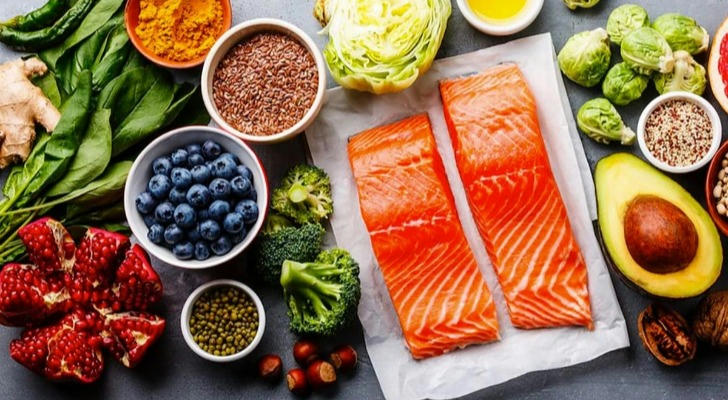Healthy Aging: Tips for Staying Fit Over 50
Aging is inevitable, but growing older doesn’t have to mean slowing down. Staying fit after 50 is less about keeping up with younger generations and more about protecting the mind, body, and independence for the decades ahead.
As the global population ages, more people are searching for ways to stay active, mobile, and sharp well into their 60s, 70s, and beyond. According to the World Health Organization, the number of people aged 60 and older is expected to double by 2050, reaching over 2 billion. With such a shift, healthy aging isn't just a personal goal — it's a public priority.
Here are science-backed strategies that can help anyone over 50 stay strong, steady, and smart — one day at a time.

🏃♂️ 1. Move More, Sit Less
Movement doesn’t need to mean marathons or gym memberships. Research from the Centers for Disease Control and Prevention (CDC) shows that older adults who engage in regular physical activity can reduce their risk of chronic diseases, improve mental health, and boost balance.
A few simple routines to consider:
Brisk walking for 30 minutes a day
Strength training twice a week (using resistance bands or bodyweight)
Stretching or yoga to maintain flexibility
Balance exercises like standing on one foot or tai chi
🏞️ Gardening, dancing, or even cleaning count as movement — the key is consistency, not intensity.

🧠 2. Keep the Brain Busy
The brain, like a muscle, needs regular workouts to stay in shape. Mental stimulation can help prevent cognitive decline and reduce the risk of dementia.
Try:
Learning new skills or languages
Playing memory or logic games
Reading across different genres
Volunteering or mentoring
According to the National Institute on Aging, engaging in challenging cognitive activities can help maintain memory and thinking skills, especially when paired with social interaction.
🧩 A crossword today might help sharpen thinking tomorrow.
🍎 3. Prioritize Nutrient-Dense Foods
As metabolism slows, every bite counts more. The focus should shift from calorie quantity to nutrient quality.
Essential nutrients to keep an eye on:
Calcium and Vitamin D for bone strength
Protein to maintain muscle mass
Fiber for digestive health
Omega-3 fatty acids for brain and heart support
A colorful plate often means a balanced one. Berries, leafy greens, whole grains, legumes, and fish can offer protective benefits with every meal.
🍽️ Think of food as daily medicine — served three times a day.

🦴 4. Don't Ignore Muscle and Bone Health
Loss of muscle and bone density starts slowly in the 30s and accelerates after 50. This gradual decline, known as sarcopenia and osteopenia, increases the risk of falls and fractures.
The solution isn’t just calcium supplements — it’s a mix of:
Resistance training
Weight-bearing activities (like walking or stair climbing)
Adequate sleep
Hormonal check-ins during physical exams
According to the International Osteoporosis Foundation, one in three women and one in five men over 50 will experience fractures due to weakened bones. Prevention starts with awareness and action.
🦵 Strong muscles = better balance = fewer accidents.
😴 5. Sleep Like It Matters (Because It Does)
Sleep patterns can shift after 50 — with lighter sleep, more awakenings, or difficulty falling asleep. Poor sleep has been linked to weight gain, heart problems, and even memory loss.
Good sleep hygiene includes:
Going to bed and waking up at consistent times
Limiting caffeine and screens before bedtime
Keeping the bedroom cool, quiet, and dark
Avoiding heavy meals late at night
A study from Johns Hopkins Medicine found that sleep-deprived older adults performed worse on memory tests than those who got 7–8 hours of quality sleep.
🛏️ Rest isn’t lazy — it’s healing.

🧘 6. Manage Stress Before It Manages Everything
Chronic stress increases inflammation, impacts heart health, and speeds up aging on a cellular level. In midlife and beyond, stress may come from caregiving, retirement changes, or health concerns.
Healthy coping methods include:
Deep breathing or meditation
Time in nature
Talking with friends
Hobbies that bring joy
Long-term stress has been linked to high blood pressure and weakened immunity. Even 10 minutes a day of intentional calm can make a difference.
🌿 Relaxation isn't a luxury — it’s longevity.
🩺 7. Keep Up with Screenings and Checkups
Staying fit after 50 means staying proactive. Regular health screenings can detect problems early — when they’re easier to manage.
Key check-ins often include:
Blood pressure and cholesterol
Colon, breast, and prostate cancer screenings
Eye and hearing tests
Immunizations (flu, shingles, etc.)
Data from the National Council on Aging highlights that preventive services are underused — even though they reduce serious illness and hospital visits.
🔎 Prevention isn’t exciting, but it’s powerful.

📍 It’s a Long Game
Healthy aging isn’t about reversing the clock — it’s about owning the future. Each habit, no matter how small, adds up over time.
Instead of chasing youth, the real win lies in:
✅ Staying independent
✅ Avoiding long-term medications
✅ Keeping joints flexible
✅ Staying sharp in mind and spirit
Aging well means living well. The choices made today will shape tomorrow’s energy, strength, and clarity.
